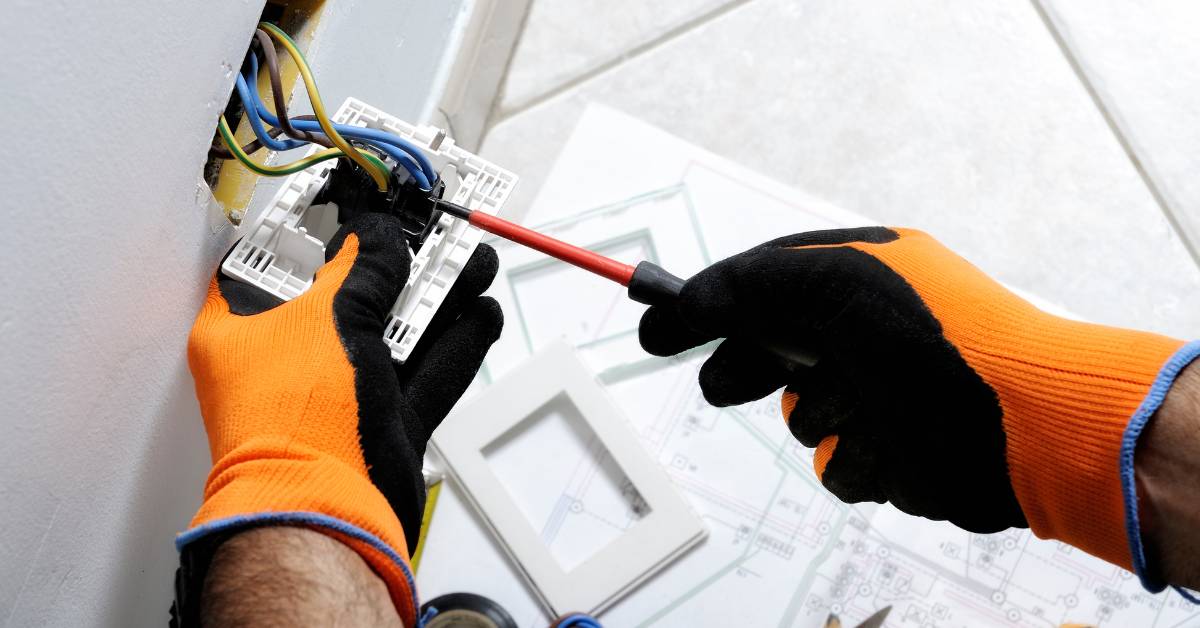Are you considering your current financial situation and wondering if your USDA loan would pull through? Or maybe you’re wondering why your USDA loan didn’t go through.
Well, there are various reasons why your USDA loan application may be denied; from credit issues to property eligibility criteria.
But it’s rarely the case if you understand how the loan program works. So, in this guide, we’ll explain why the USDA may deny your loan application, what steps to take if your loan is rejected, and how to boost your odds of approval.
If you want a smooth and successful USDA loan application process, keep reading.
Common Reasons Why A USDA Loan Application May Be Denied
While the program offers many advantages, such as low-interest rates and no down payment requirements, it’s essential to remember that not all applicants will be approved.
Most often, you may be unapproved if you fail to meet the USDA loan eligibility criteria. Besides that, here are some common reasons why your USDA loan application may be denied:
- Credit rating: If your rating falls below the minimum threshold (640), your application could be rejected. But this depends on your lender as some have higher requirements.
- Employment history: Any history of job gaps or frequent changes could raise red flags among lenders, and this can affect your loan approval.
- Income: If your income is high, it could disqualify you from a loan. Furthermore, an unstable or inconsistent pattern of employment could also lead to denial.
Factors That Can Affect USDA Loan Approval

As we’ve already established, a good understanding of how the USDA loan works could go a long way to boost your chances of approval.
If you’re unsure what has a hand in the approval process of your USDA loan, here are a few:
- Employment history: Lenders require a stable employment history before approving a USDA loan, so make sure you’ve had the same job for at least two years with no gaps in employment.
- Incomplete documentation: When applying for a USDA loan, it’s essential to supply all necessary documentation. Any missing or incomplete paperwork can cause delays in the approval process or even lead to denial.
- Debt-to-Income (DTI) ratio: Your DTI ratio is the percentage of your monthly income that goes towards debt payments. Lenders typically look for a DTI ratio of 41% or lower, although some exceptions may be made in certain circumstances.
- Property eligibility: USDA loans are limited to rural or suburban neighborhoods. The property you’re interested in purchasing or refinancing must meet USDA’s property eligibility requirements, including location, condition, and use.
- Loan amount: USDA loans have maximum loan limits based on the area’s median home prices, and your loan amount must fall within these limits.
- Other factors: Other factors that could impact your eligibility for a USDA loan include past late payments, bankruptcy, foreclosure, and other financial difficulties.
How Inadequate Income or Employment History Can Affect Your USDA Loan Approval?
Lenders assess your income to ensure that it’s stable, consistent, and sufficient to cover your monthly mortgage payments, property taxes, and insurance. Inadequate income results in a higher debt-to-income (DTI) ratio, which can affect your loan approval negatively.
Similarly, significant gaps or changes in employment can raise concerns. If you have inadequate employment history, such as being recently self-employed or having frequent job changes, it may impact your loan approval.
These two factors raise concerns about your ability to repay the loan. Lenders want to ensure that you can make regular mortgage payments. This may also result in a lower loan amount approval, higher interest rates, or even loan denial.
Can A Property’s Condition Affect My USDA Loan Approval?

Absolutely, the condition of a property can have an impact on whether or not lenders approve of a USDA loan. As with any mortgage loan, lenders want the guarantee that the asset is worth borrowing money for and meets minimum safety standards. When applying for a USDA loan, lenders will order an appraisal to be conducted; an appraiser will visit your home and evaluate its condition and value.
When an appraiser inspects a property, they take into account its age, foundation condition, roofing system, plumbing, and electrical systems as well as overall structural integrity. If they discover that there are problems that need to be fixed or addressed before approval can be granted, your loan application may be denied or repairs may be required before your loan can be approved.
How Important Is It to Have a Complete and Accurate Loan Application When Applying for A USDA Loan?
When applying for a USDA loan, it’s essential that your application be complete and accurate in order to increase your chances of approval.
Incomplete and inaccurate information during the approval process can:
- Raise red flags, delay the loan approval process, or even result in a loan denial.
- Affect your eligibility assessment and decrease your chances of approval.
- Result in incorrect loan terms, which can impact your ability to afford the loan or result in unfavorable loan terms.
- Complicate the loan approval process and limit its smooth progression.
- Result in loan rejection, legal consequences, and potential fraud charges.
What Can I Do If My USDA Loan Application Is Denied?

If your USDA loan application is denied, it can be disappointing, but it’s important to understand that there are steps you can take to address the issue and potentially improve your chances of approval.
Here are some things you can do if your USDA loan application is denied:
- Review the denial letter from the lender to understand the specific reasons for the denial. It could be due to credit issues, income or employment history, property eligibility, or other factors.
- Address the issues highlighted. For example, if the denial was due to credit issues, work on improving your credit score by paying off outstanding debts and establishing a positive payment history.
- If you are unable to address the issues or do not meet the eligibility requirements for a USDA loan, consider exploring other loan options like the FHA loan. Unlike the USDA loan, however, FHA loans come with a down payment requirement.
- Consider seeking professional assistance for guidance and help to navigate the loan application process, including reviewing the denial letter, identifying the issues, and suggesting potential solutions.
- Finally, consider reaching out to another lender. Other lenders may have different underwriting standards and could potentially offer you a loan that meets your needs.
To summarize, here’s a table including factors that can potentially result in USDA loan denials and what you can do to address them:
| Common Reasons for USDA Loan Denials | Possible Solutions/Actions |
|---|---|
| Inadequate credit score | Improve your credit by paying off debts, resolving disputes, and managing credit responsibly. Consider working with a credit repair professional if needed. |
| Insufficient income or employment history | Provide additional documentation to demonstrate stable employment and income, such as pay stubs, tax returns, and employment verification letters. |
| High debt-to-income ratio | Pay off debts or reduce monthly debts to lower your debt-to-income ratio. Consider increasing your income, such as getting a co-signer or finding additional sources of income. |
| Ineligible property location | Check the USDA property eligibility map to ensure the property is located in an eligible rural area. Consider looking for properties in other eligible areas. |
| Incomplete or inaccurate loan application | Review your loan application thoroughly and ensure all information is accurate and complete. Provide any requested documentation promptly and follow up with your lender. |
| Other credit or financial issues | Address any other credit or financial issues that may impact your loan eligibility, such as bankruptcies, foreclosures, judgments, or outstanding tax liens. |
It’s important to note that the specific actions to take may vary depending on your individual circumstances and the reasons for the loan denial. Consulting with a qualified loan.
How Can You Increase Your Chances of Receiving A USDA Loan?
Whether it’s a refinancing, a home purchase, or a USDA construction loan, there are important factors that can facilitate the approval of your loan.
Here are some tips to increase your chances of USDA loan approval:
- Select an eligible property: Make sure the property you plan to buy qualifies for a USDA loan. Eligible properties must be located in designated rural areas and meet certain requirements.
- Save ahead of the application: USDA loans don’t require you to make a down payment, but having some savings can help you qualify for larger loans and demonstrate financial responsibility. It also demonstrates to lenders that you’re capable of covering the costs associated with homeownership.
- Connect with an experienced USDA lender: Working with a lender knowledgeable about USDA loans is essential. They can guide you through the application process and assist with any challenges that may arise along the way.
Tips for Avoiding Potential Pitfalls When Applying for USDA Loans

With the tips for approval at your fingertips, keep these common pitfalls in mind to navigate them carefully too
- Limit major purchases: Making major purchases or taking on new debt during the loan application process can affect your debt-to-income ratio and negatively affect your chances of approval.
- Maintain your credit: Avoid opening new lines of credit before and during loan application, keep credit card balances low, and pay off bills promptly.
- Stay connected with your lender: Stay connected to your lender throughout the loan application process. Make sure you understand what’s expected of you and what steps need to be taken in order for the process to move forward smoothly.
Frequently Asked Questions
Is a low credit score a reason for USDA loan denial?
Low credit scores can be one of the reasons for USDA loan denial. Although USDA loans have more relaxed credit criteria, there remains a minimum rating requirement of around 640 for approval. However, some lenders may require higher ratings as well.
Can a co-borrower’s credit or financial situation impact my USDA loan approval?
Your co-borrower’s credit or financial situation can have an effect on whether or not you receive a USDA loan. When applying for a loan with someone else, the lender will take into account both credit ratings, employment history, and current financial condition when determining eligibility.
Can a high debt-to-income ratio cause USDA loan denial?
A High DTI ratio could lead to USDA loan denial. This proves to the lenders that you are likely to have difficulty making your mortgage payments on schedule, which could result in the denial of your request.
Will a previous bankruptcy or foreclosure affect my chances of getting a USDA loan?
No, you won’t be disqualified for a USDA loan if you have never been bankrupt or in foreclosure. In certain circumstances (e.g., job loss or medical bills), however, the waiting period may be reduced or waived altogether.
Will not meeting the location eligibility requirements result in a USDA loan denial?
Yes, not meeting location eligibility requirements can lead to the denial of a USDA loan application. USDA loans are only available in designated rural or suburban areas that meet certain criteria; if your property isn’t located in one of those eligible areas, your application may be denied.
So, What’s the Way Forward?
The USDA has specific eligibility guidelines, and if you don’t meet those requirements, your loan application could be denied. It’s like trying to fit a square peg into a round hole – it just doesn’t quite work.
But don’t worry, we can help you navigate these challenges. If you’ve been denied a USDA loan or have questions about the eligibility requirements, don’t hesitate to give us a call.
We’ve seen it all, from credit hiccups to employment blips, and we’re here to guide you through the process with a smile on our faces.






